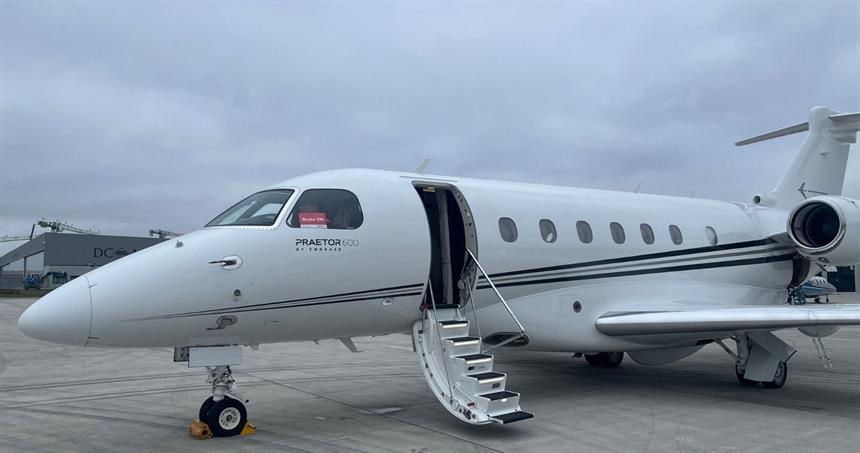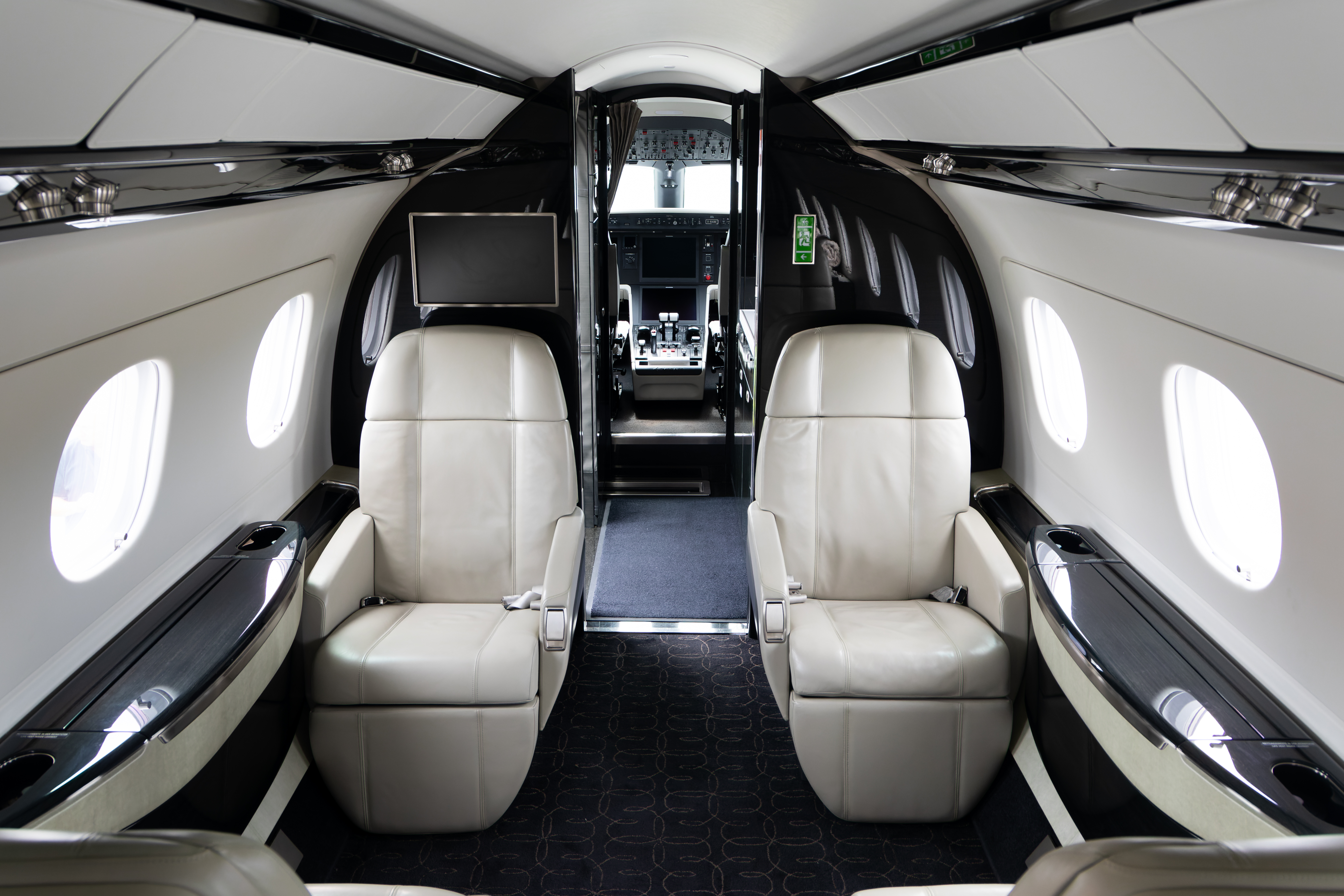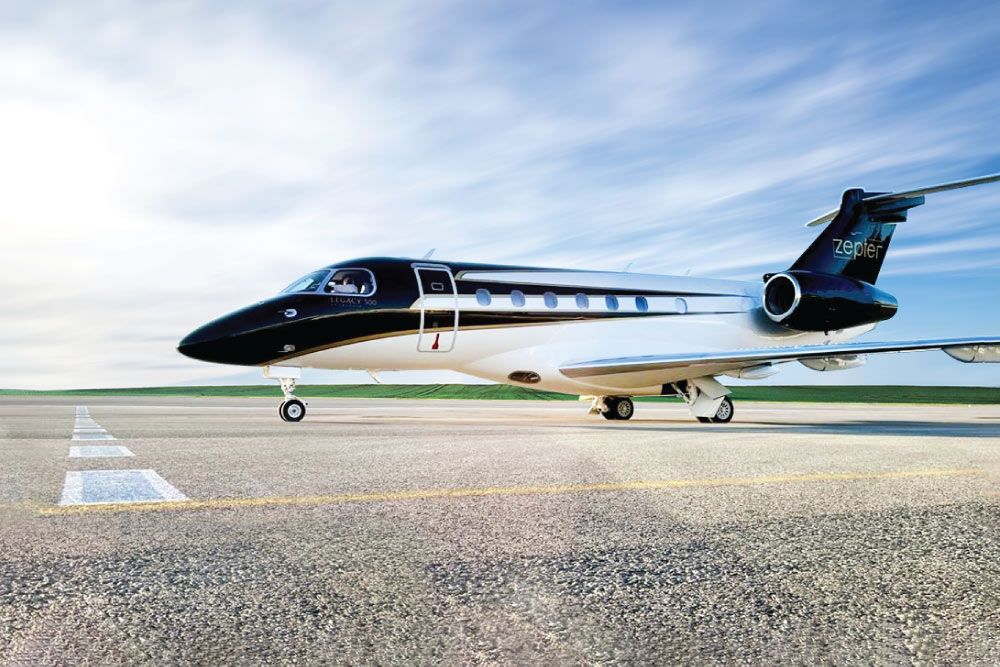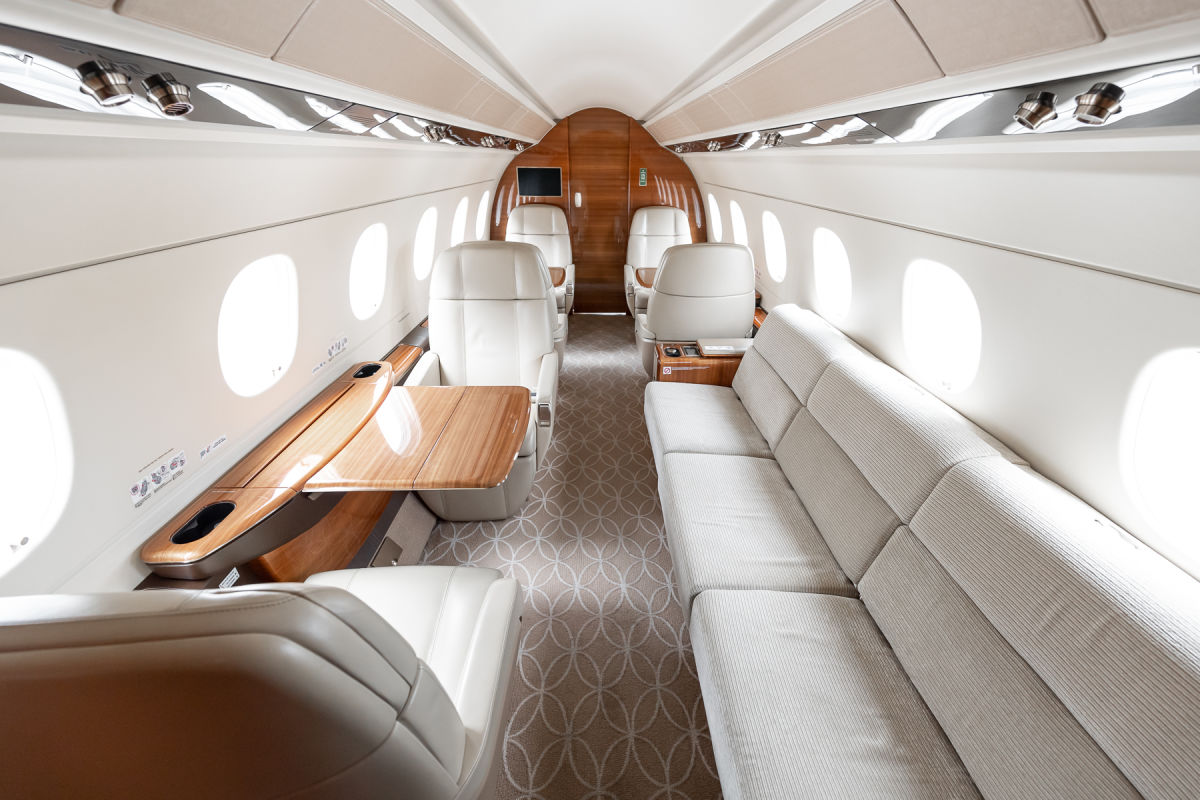Embraer Legacy 500/Praetor 600: Elevating the Standards of Super Midsize Business Jets
Join us in our detailed video review of the Embraer Legacy 500 and its exceptional evolution, the Praetor 600, aircraft that symbolize the pinnacle of luxury, comfort, and superior performance in the super midsize business jet category. Embraer, renowned globally for its pioneering aerospace designs from its headquarters in Brazil, consistently pushes the boundaries of aviation excellence. The Legacy 500/Praetor 600 series is a testament to this relentless pursuit of perfection. Let us guide you through the remarkable journey of the Embraer Legacy 500 and Praetor 600, highlighting the evolutionary design, and premium features that set a new standard in the super midsize jet segment. We will delve into how they stand out from the competition, emphasizing their unparalleled performance, luxurious amenities, and innovative technologies.
A Glimpse into Embraer's Legacy
Founded in 1969, Embraer has grown into one of the world's leading aerospace manufacturers, known for its advanced regional jets, military aircraft, and business jets. Launched with its first flight on November 27, 2012, the Legacy 500 marked a notable advancement in the industry, being the first in its category to feature a flat-floor stand-up cabin and a sophisticated fly-by-wire control system. Certified on August 12, 2014, it began its journey to redefine super midsize business air travel, offering room for up to 12 passengers and achieving a range of 3,125 nautical miles (5,790 km; 3,600 mi).
The development of the Legacy 500 was part of Embraer's strategic move to fill a niche between the smaller Phenom 300 and the larger Legacy 600, aiming to capture about 22% of the market share. This ambition materialized with the unveiling of the cabin mock-up at the National Business Aviation Association (NBAA) convention in August 2007.
The Legacy 500's design and technology set a new standard in its class. Powered by Honeywell HTF7500E turbofans and equipped with a Rockwell Collins Pro Line Fusion avionics suite, the aircraft boasts a 95% systems commonality with its sibling, the Legacy 450. Its production began in 2011, with an assembly line established in Melbourne, Florida, in June 2016 to enhance its manufacturing process.
As the Legacy 500 gained traction in the market, Embraer sought to innovate further, leading to the development of the Praetor 600, an improved variant of the Legacy 500, introduced in October 2018. The Praetor 600 extended the boundaries of what was possible in the super-midsize jet category, offering a longer range of 4,018 nmi (7,440 km; 4,620 mi) thanks to additional fuel tanks and more powerful engines. The introduction of the Praetor 600, alongside the Praetor 500—an upgraded version of the Legacy 450—highlighted Embraer's commitment to enhancing performance and comfort.
The development of the Praetor series demonstrated Embraer's dedication to innovation. Flight testing for the Praetor 600 began in March 2018, quickly followed by the Praetor 500, with both variants showcasing significant improvements over their predecessors. These included taller and wider winglets for better aerodynamics and a synthetic vision system for enhanced safety.
The Praetor 600 was certified by Brazil's National Civil Aviation Agency in April 2019, with the first delivery occurring in June of the same year. It boasted impressive capabilities, including a remarkable range that allowed it to perform long-haul missions with ease.
The production of 151 aircraft underscores the model's success and Embraer's prowess in the competitive aerospace industry.
Cabin Review and Comparison: Embraer Legacy 500 vs. Praetor 600
The Embraer Legacy 500 stands out in the super midsize business jet market, particularly for its cabin offerings that blend luxury, comfort, and technological sophistication. The cabin, spacious enough to comfortably accommodate 8 to 12 passengers, is ideal for both business travel and family trips. A forward galley, two distinct cabin zones designed for work or relaxation, and a fully-equipped aft lavatory highlight the aircraft's thoughtful interior design. The inclusion of a flat floor throughout enhances the feeling of space and ease of movement.
The seats in the Legacy 500 cabin are fully berthable, transforming into flatbeds for maximum comfort during long flights. Upholstered in fine leather, the seats exude luxury and sophistication, complementing the high-end aesthetic of the cabin. Entertainment options are plentiful and modern, featuring high-definition monitors, audio and video on demand, and connectivity for personal devices. The cabin also boasts high-speed Internet connectivity, ensuring passengers stay connected throughout their journey.
The digital control of the cabin environment, managed via the Honeywell Ovation Select Cabin Management Suite, ensures a quiet, draft-free atmosphere, maintaining comfortable conditions throughout the flight. Ambient LED lighting enhances the cabin's ambiance, while the galley comes well-equipped with a convection oven, coffee brewer, and other amenities for in-flight dining. Exceptional soundproofing minimizes exterior noise, contributing to a serene flight experience. The maximum cabin altitude of 5,800 feet or 1,770 meters, larger-than-average windows, and a generous baggage compartment capacity further emphasize the Legacy 500’s design ethos, prioritizing passenger comfort and convenience.
The Praetor 600 evolves the concept of cabin luxury and technological integration set by the Legacy 500. With a 6-foot-tall flat-floor cabin, the Praetor 600 presents an interior that showcases meticulous attention to detail and superb craftsmanship. The seats not only offer velvet-like comfort but also recline, swivel, and convert into flatbeds, ensuring restful sleep on long flights. The high-quality interior materials, including the option for carbon fiber elements, underscore the aircraft's premium status.
Connectivity in the Praetor 600 is unparalleled, featuring the highest internet connectivity in its class through Viasat Ka-band and Gogo AVANCE L5, ensuring passengers are always online. The Honeywell Ovation Select Cabin Management Suite enriches the in-flight experience with full HD 1080P TV streaming and immersive audio, catering to both work and relaxation needs.
Both the Legacy 500 and Praetor 600 cabins reflect Embraer’s commitment to delivering class-leading comfort, luxury, and technology. However, the Praetor 600 takes these principles to new heights with enhanced connectivity options, improved materials, and an overall attention to detail that surpasses its predecessor. The Praetor 600's cabin design not only maintains the spacious and comfortable environment of the Legacy 500 but also introduces new features and amenities that elevate the passenger experience.
The most notable differences come in the form of technological advancements and material quality in the Praetor 600, which offer passengers a more refined and connected flight experience. Additionally, the Praetor 600’s capability to land on shorter runways without compromising comfort or luxury makes it a more versatile choice for travelers seeking both performance and unparalleled cabin experience.
In summary, while the Legacy 500 set a high standard for super midsize business jet cabins, the Praetor 600 builds upon this foundation with advancements in comfort, connectivity, and craftsmanship, offering an even more exceptional value and expanding the journey possibilities for its passengers.
Cockpit Review and Comparison: Embraer Legacy 500 vs. Praetor 600
The cockpit of the Embraer Legacy 500 represents a significant leap forward in aviation technology and pilot experience. It is designed around the concept of providing pilots with the most advanced tools and comfortable environment for both short and long-haul flights. The cockpit is equipped with huge glass panels, sidesticks, autothrottles, and a paperless cockpit setup, making it a marvel of modern aviation technology.
The fully digital flight controls, a hallmark of the Legacy 500, offer unparalleled precision and responsiveness, allowing pilots to navigate with confidence. The incorporation of autothrottles is another standout feature, enabling the aircraft's computer to automatically control engine power settings, thereby enhancing flight efficiency and reducing pilot workload.
Central to the cockpit’s avionics is the Rockwell Collins Pro Line Fusion flight deck. This integrated system is based on cutting-edge fly-by-wire technology and includes four 15-inch high-resolution LCD screens. These displays provide comprehensive flight information, including 3D navigation maps and synthetic vision, significantly improving situational awareness.
Additional features such as the Integrated Flight Information System, graphical flight planning capabilities, MultiScan Weather Radar, and advanced communication systems further enhance the aircraft's operational capabilities. The Enhanced Vision System and Head-up Display are critical in low-visibility conditions, ensuring safe flight operations.
The ergonomic design of the pilot and co-pilot seats, along with optimized noise levels and lighting in the cockpit, ensures maximum comfort and concentration during flights. The electric sun visors and the cockpit's quiet and dark philosophy reduce glare and distraction, making the Legacy 500's cockpit an exemplary work environment for pilots.
The Praetor 600, as an evolution of the Legacy 500, retains the advanced cockpit design and incorporates further enhancements that elevate the flying experience. Like its predecessor, the Praetor 600 features a highly advanced cockpit with large glass panels, sidesticks, autothrottles, and a paperless environment. However, the Praetor 600 has made strides in integrating newer technologies and refinements for an even more intuitive pilot experience.
The Praetor 600 continues to use the Rockwell Collins Pro Line Fusion flight deck but introduces updated software and avionics capabilities to further assist pilots. The ergonomics of the pilot seats have been refined, and the cockpit’s noise reduction and lighting optimization have been enhanced to reduce fatigue on long flights. The Praetor 600 also maintains the quiet and dark cockpit philosophy, ensuring that pilots are alerted to crucial information without unnecessary distractions.
The introduction of newer technologies in the Praetor 600’s cockpit, such as improved weather radar, advanced navigation systems, and more integrated communication systems, reflect Embraer’s commitment to safety and efficiency. The Enhanced Vision System and Head-up Display in the Praetor 600 have been upgraded to provide even clearer and more detailed visuals in challenging conditions.
Engine, Performance, and Specifications Comparison: Legacy 500 vs. Praetor 600
The Embraer Legacy 500 is a marvel of modern aviation, blending high performance, efficiency, and range in a super midsize business jet package. At the heart of its capabilities are two Honeywell HTF7500E engines, each delivering 7,036 pounds of thrust, which enable the aircraft to achieve impressive performance metrics.
The Legacy 500's engines not only provide the power needed for high-speed travel but also contribute to its remarkable efficiency. With a maximum cruise speed of 466 knots, the aircraft can swiftly cover significant distances, making it ideal for business travelers looking to maximize their productivity. The aircraft's capability to ascend to a maximum cruising altitude of 45,000 feet or 13,716 meters allows it to fly above most weather conditions, ensuring smoother flights.
An important aspect of the Legacy 500's performance is its fuel efficiency, with an average hourly fuel burn of 250 gallons (950 liters). This efficiency plays a crucial role in its extended range of 3,125 nautical miles (5,800 kilometers), enabling non-stop flights between the east and west coasts of the U.S. without the need for refueling. Such range capabilities are complemented by the aircraft's operational versatility, showcased by its relatively short takeoff distance of 4,100 feet (1,250 meters), rapid rate of climb, and minimum landing distance of 2,100 feet (640 meters).
The aircraft's design also emphasizes payload capacity, with a maximum net payload of 2,800 pounds (1,270 kg) and a full-fuel payload of 1,600 pounds (725 kg). These specifications underline the Legacy 500's ability to carry significant cargo or passenger loads without sacrificing range or performance.
The Praetor 600, as an advancement over the Legacy 500, pushes the boundaries of what is possible in the super-midsize jet category. It retains the same engine model as the Legacy 500 but introduces enhancements that extend its performance and range.
With slight modifications and optimizations, the Praetor 600 achieves an even greater range of 4,018 nautical miles (7,441 kilometers), significantly outpacing the Legacy 500. This increased range makes the Praetor 600 capable of performing transatlantic flights, connecting cities like New York to London non-stop, which is a notable advantage for international travelers.
The Praetor 600 also exhibits superior takeoff and landing capabilities, requiring even shorter runways in certain conditions compared to the Legacy 500, thereby providing access to a wider array of airports. This is particularly beneficial for accessing more direct routes and remote destinations.
Furthermore, the Praetor 600 maintains a high level of fuel efficiency and operational flexibility, characteristic of Embraer's engineering. The aircraft’s enhancements not only contribute to its range and performance but also improve its environmental footprint, making it a compelling choice for eco-conscious travelers.
Pricing and Operating Costs of the Embraer Legacy 500 and Embraer Praetor 600
The Embraer Legacy 500 carries a base purchase price of $20 million before options. This price reflects the aircraft's position in the market as a high-end, technologically sophisticated business jet. For those interested in chartering rather than owning, the Legacy 500 charter price ranges from $5,000 to $8,000 per hour. This variation in charter costs is influenced by factors such as availability, fuel prices, ground fees, and other operational considerations.
Regarding the operating costs of the Legacy 500, owners can expect annual fixed costs to be roughly between $700,000 to $1,000,000. The average hourly operating cost is estimated at $3,000 to $4,500, encompassing fuel, maintenance, crew salaries, and other variable expenses.
The Embraer Praetor 600, an evolution of the Legacy 500, is slightly more expensive, with a list price of just under $21 million. The charter cost for the Praetor 600 is estimated at about $8,000 per flying hour, reflecting its superior capabilities and market position. Similar to the Legacy 500, these prices can fluctuate based on various operational factors.
If you need to charter an Embraer Legacy 500 or any other private jet, consider using the excellent services of Private Jet Finder.
Competitors: How the Legacy 500 and Praetor 600 Measure Up Against the Field
The super-midsize business jet segment is highly competitive, with several key players offering unique selling points. Among these, the Embraer Legacy 500 and its evolutionary counterpart, the Praetor 600, stand out for their blend of performance, luxury, and technological innovation. Here, we compare these two aircraft against their main competitors, focusing on aspects like range, price, performance, interior, and other distinguishing features.
Gulfstream G280
The Gulfstream G280 boasts a longer range (3,600 nmi) compared to the Legacy 500 (3,125 nmi), allowing for more extended non-stop flights. Its high-speed performance and advanced cockpit technology set high standards in the segment.
However, it comes at a higher cost, both in terms of initial purchase and operating expenses, making the Legacy 500 and Praetor 600 more economically attractive options for some buyers.
Bombardier Challenger 350
Known for its spacious cabin and smooth ride, the Challenger 350 offers a competitive range (3,200 nmi) and a high level of comfort. Its wide cabin is a significant advantage for passenger comfort on longer flights.
The Challenger 350, while competitive in range and comfort, may not offer the same level of fuel efficiency as the Praetor 600. Additionally, its avionics suite, though advanced, may not be as cutting-edge as the Pro Line Fusion found in the Praetor 600.
Cessna Citation Longitude
The Citation Longitude offers a quiet cabin, state-of-the-art technology, and a comfortable interior. Its range (3,500 nmi) is slightly better than the Legacy 500's, making it a strong contender for long-haul flights.
Despite its advantages, the Longitude may fall short in terms of the overall cabin volume and payload capacity compared to the Praetor 600. Its operating costs can also be higher, impacting long-term ownership economics.
Conclusion
The Legacy 500 and Praetor 600 are formidable contenders in the super-midsize business jet market, offering a balanced mix of range, performance, and luxury at competitive price points. While competitors like the Gulfstream G280, Bombardier Challenger 350, and Cessna Citation Longitude present their own advantages, particularly in terms of range and cabin space, the Embraer models stand out for their technological innovation, fuel efficiency, and value for money. The choice between these aircraft will largely depend on the specific needs and priorities of buyers, such as range requirements, budget constraints, and the level of luxury and customization desired in the cabin.







